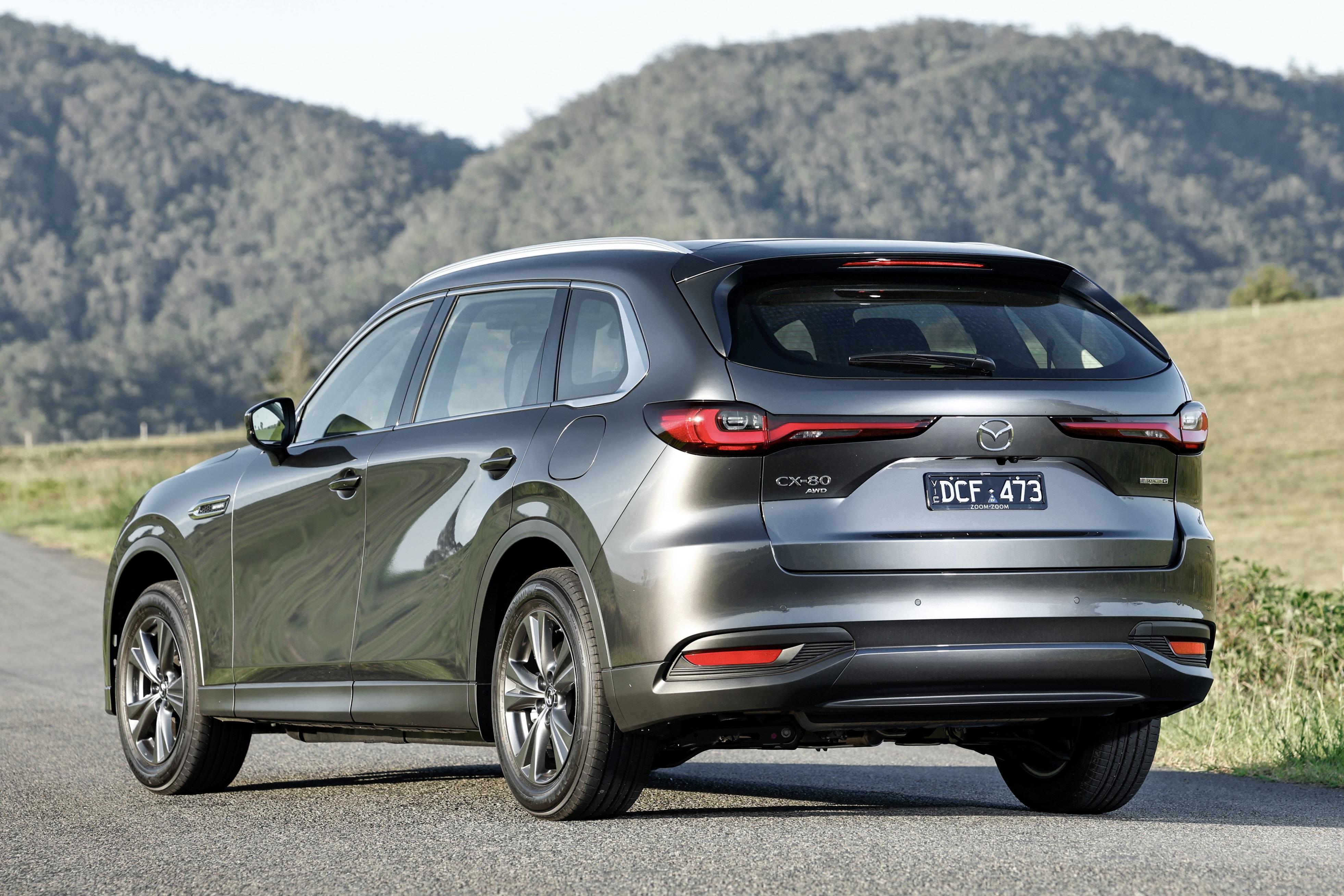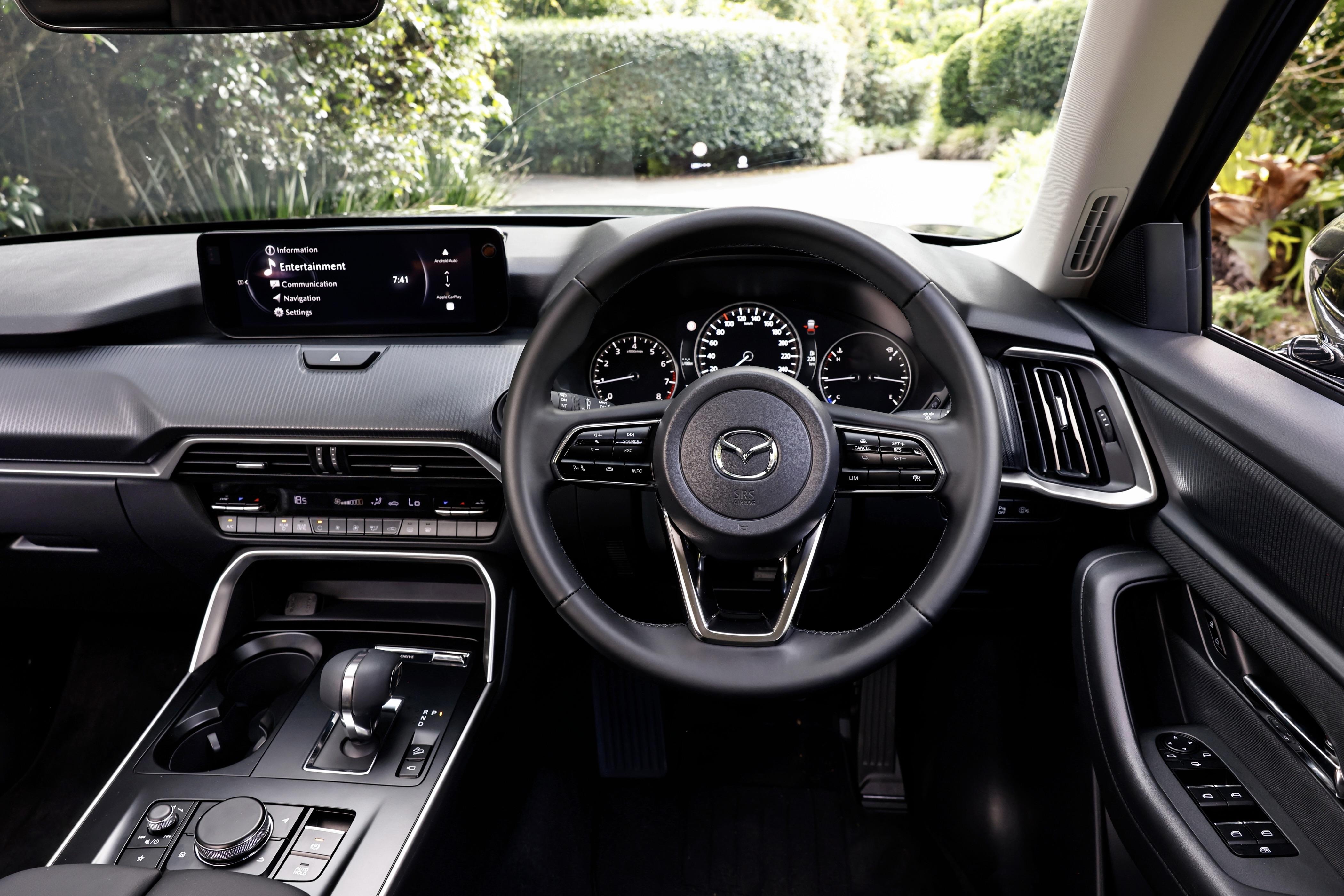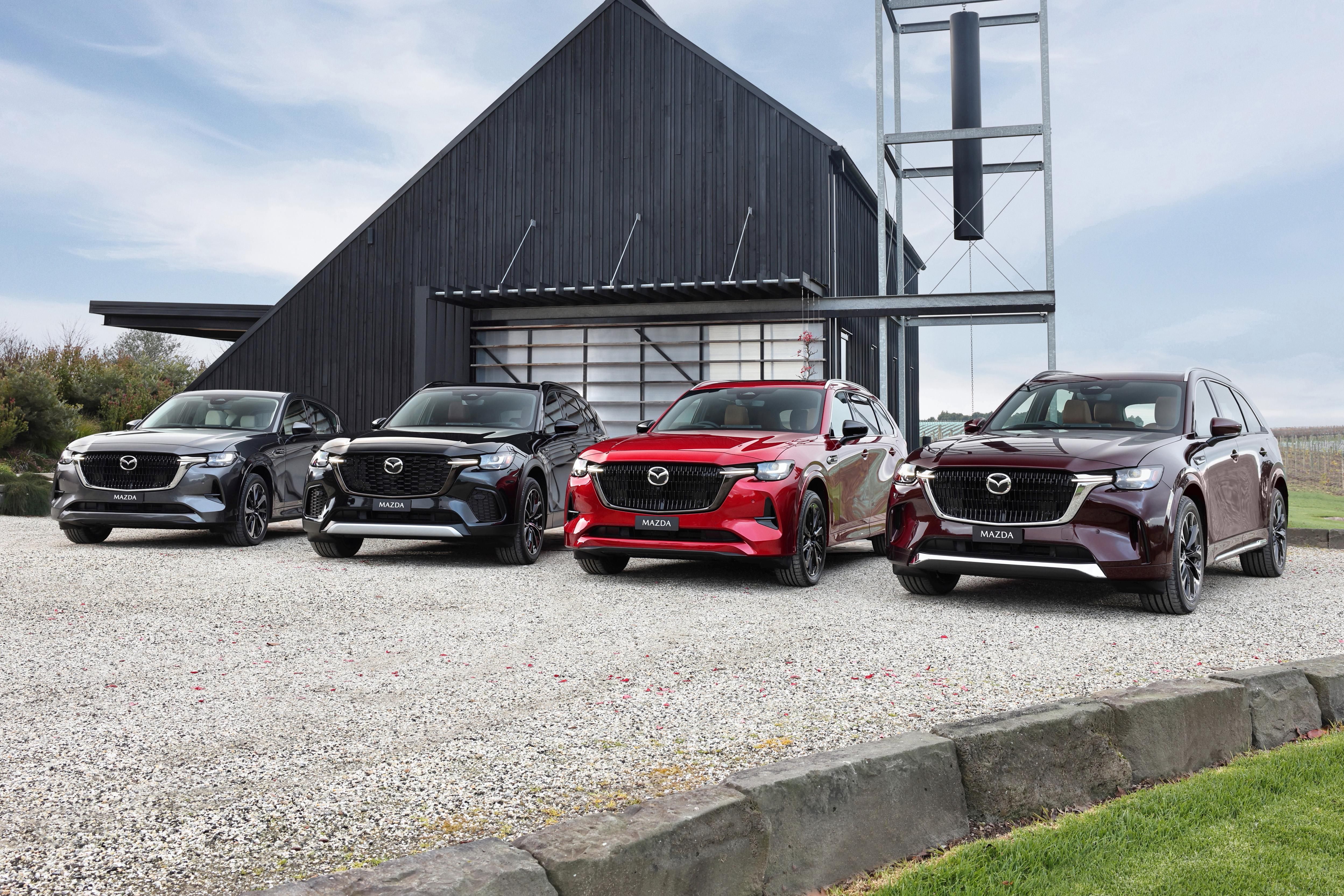Mazda Australia may have just introduced less expensive, four-cylinder rear-wheel drive versions of its CX-60 mid-size SUV, but don’t expect it to follow suit with the related three-row CX-80 large SUV.
The company’s managing director, Vinesh Bhindi, told CarExpert the CX-80 – effectively a CX-60 with seven seats – is “not available” with the naturally aspirated Skyactiv-G 2.5 petrol engine that’s just been introduced to the CX-60 range locally.
“I think CX-80 becomes too big for this drivetrain, so it’s not engineered [for the CX-80]. It’s not available, and we’re not looking for it,” Mr Bhindi said.
The CX-60 ‘G25’ range is powered by Mazda’s ubiquitous 2.5-litre atmo four, driving the rear wheels exclusively. Compared to the ‘G40e’ 3.3-litre turbocharged petrol inline six with 48V mild-hybrid (MHEV) tech, the four-pot SUV is down 71kW of power and 200Nm of torque, and offers similar fuel consumption (7.5 versus 7.4L/100km), but is $6000 cheaper.
CarExpert can save you thousands on a new car. Click here to get a great deal.


The CX-80 range currently opens from $55,200 for the entry-level G40e Pure variant, which comes with the same 209kW/450Nm 3.3L turbo-petrol straight-six available in the smaller CX-60. While there’s no cheaper 2.5-litre version of the CX-80 globally, the Japanese market offers a non-MHEV 3.3L turbo-diesel which could serve a similar purpose.
Known in its home market as the CX-80 ‘XD’ – versus ‘XD-Hybrid’ for the 48V M Hybrid version known here as the D50e – the non-electrified inline-six diesel is available with rear-wheel drive and is as much as 900,000 Japanese yen (~$9100) cheaper than the equivalent CX-80 XD-Hybrid 4WD.
That price berth in the domestic market could easily see a $6000-ish cheaper version of the CX-80 in Australia sans Mazda’s M Hybrid tech, potentially bringing the three-row SUV’s entry point below $50,000 before on-road costs and much closer to the ~$42,000 starting point the Mazda CX-8 offered before it was discontinued.
Mr Bhindi said Mazda Australia is not “planning anything for any variation in diesel”, at least for the CX-60, so it’s unclear whether the Japanese brand is investigating the non-MHEV diesel for the larger CX-80 at this stage.
While Mazda has expanded the CX-60 lineup to match – and now beat – the level of choice on offer in the CX-80 range, the wide-body CX-70 and CX-90 are unlikely to be made available with plug-in hybrid (PHEV) drivetrains like their narrower counterparts.

In the same interview, Mazda Australia’s managing director said the brand’s local research and development budget is being focused on upcoming EV and hybrid products rather than expanding the availability of plug-in tech for the Large Architecture-based SUVs, citing cooling demand following the end Fringe Benefits Tax (FBT) breaks for PHEVs earlier this year.
Australia is the only market in the world in which Mazda offers all four of its Large Architecture SUVs. The CX-60 and CX-80 are aimed primarily at Japan and Europe, while the longer and wider CX-70 and CX-90 were designed with the North American market in mind.
Local customers are steering to the European-leaning models based on sales numbers, with the CX-60 and CX-80 each accounting for 4067 and 2963 registrations so far this year to September respectively, whereas the the relatively pricier CX-70 and CX-90 pale in comparison with just 278 and 547 units each.
Meanwhile, the ageing but far more attainable CX-3, CX-30 and CX-5 have found 11,971, 9370 and 17,029 new homes respectively so far this year, accounting for 54.6 per cent of Mazda’s total volume (70,242) in 2025.

